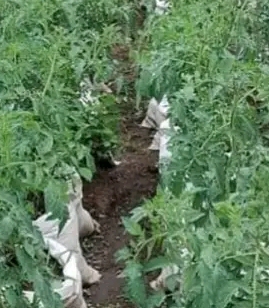Tomato farming is evolving with the adoption of modern techniques like staking, pruning, and staggered planting. These methods are transforming how farmers grow and manage their tomato crops, leading to increased productivity and better-quality fruits.
1. Staking: Staking provides physical support to tomato plants, keeping them upright and off the ground. This not only prevents diseases from soil contact but also improves air circulation around the plants, reducing the risk of fungal infections. It also makes harvesting easier and enhances fruit quality by ensuring more even exposure to sunlight.
2. Pruning: Pruning involves removing excess leaves and side shoots, allowing the plant to direct its energy toward fruit production. This method ensures healthier plants with larger, juicier tomatoes. Pruning also reduces overcrowding, improving ventilation and preventing the spread of diseases.
3. Staggered Planting: By planting tomatoes in stages, farmers can achieve continuous harvesting over a longer period. This approach helps in managing market supply, reducing the risk of a glut, and ensuring consistent income over the season. Staggered planting also helps in managing labor, as the work is spread out rather than concentrated in a short time.
Adopting these techniques helps tomato farmers increase yields, improve fruit quality, and better manage resources, making tomato farming more profitable and sustainable.
Follow Iroko Desmond Umezulike for more agricultural updates
